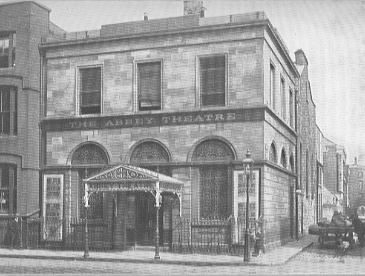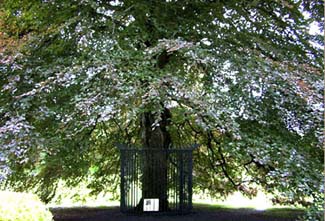Gort Ireland & Milwaukee Wisconsin
I spoke about ClanDonnel: A Storied History of Irelandl at the Autograph Tree at Milwaukee’s Irish Festival in August. This is an incredible honor. To understand why, one must know the story of the tree and Lady Isabella Gregory.

Lord William Henry Gregory was one of the more despicable characters in the British Parliament during the Great Hunger. ClanDonnellincludes a subchapter on the ‘Gregory Clause’ which displaced thousands of Irish during the potato blight – adding homelessness to those already starving and diseased. Gregory owned thousands of acres in County Galway, which his ancestors confiscated from the Irish a few hundred years before.
Decades later, at the age of 63, Gregory married 28 year old Isabella Augusta Persse, who thus became Lady Gregory. Isabella was raised in a strict evangelical Protestant home and was forbidden from reading novels until she was 18. She was, though, influenced by her Catholic nanny, who taught her the Irish language and told the tales and legends of western Ireland.

On her husband’s death, Lady Gregory inherited the Galway lands and a small fortune. Her attitude towards the Irish was far different from that of her late husband, and she spent vast sums of money to promote Irish culture. She roamed the countryside of Ireland to collect and preserve Irish songs, stories, and folklore in the native Irish language. She wrote plays in Irish, and she co-founded the Abbey Theatre in Dublin.
The Abbey Theatre, also known as the National Theatre Ireland, still hosts plays today.
Lady Gregory still owned a large estate in Galway and maintained her home in Gort. She lived in Coole House, built in the 18th Century by her late husband’s great-grandfather. She entertained many literary giants at Coole House and they took turns reading from their works. Her guests included William Butler Yeats, George Bernard Shaw, Edward Martyn, Sean O’Casey, and John Millington Synge.

Their readings were often in the walled gardens which surrounded Coole House. The garden’s centerpiece was (and still is) a large copper beach tree. Special guests were invited to carve their initials in the tree, and it thus became the Autograph Tree.
Coole House was badly burned during Ireland’s War of Independence in 1921. Lady Gregory died in 1932 and Coole House demolished a decade later. About 1,000 acres of the estate remain as a wildlife nature preserve, maintained by Ireland’s National Parks & Wildlife Service.
The Autograph Tree remains. A place for literature readings by Yeats, O’Casey, Shaw, and now me.

The Autograph Tree, in all of its splendor, still stands at Gort and is shown at the top photo. The photo on the left shows the grate around the trunk to protect the tree from further disfigurement.

Lady Gregory, from her 1913 autobiography, courtesy of From A Celebration of Women Writers, University of Pennsylvania digital library project

